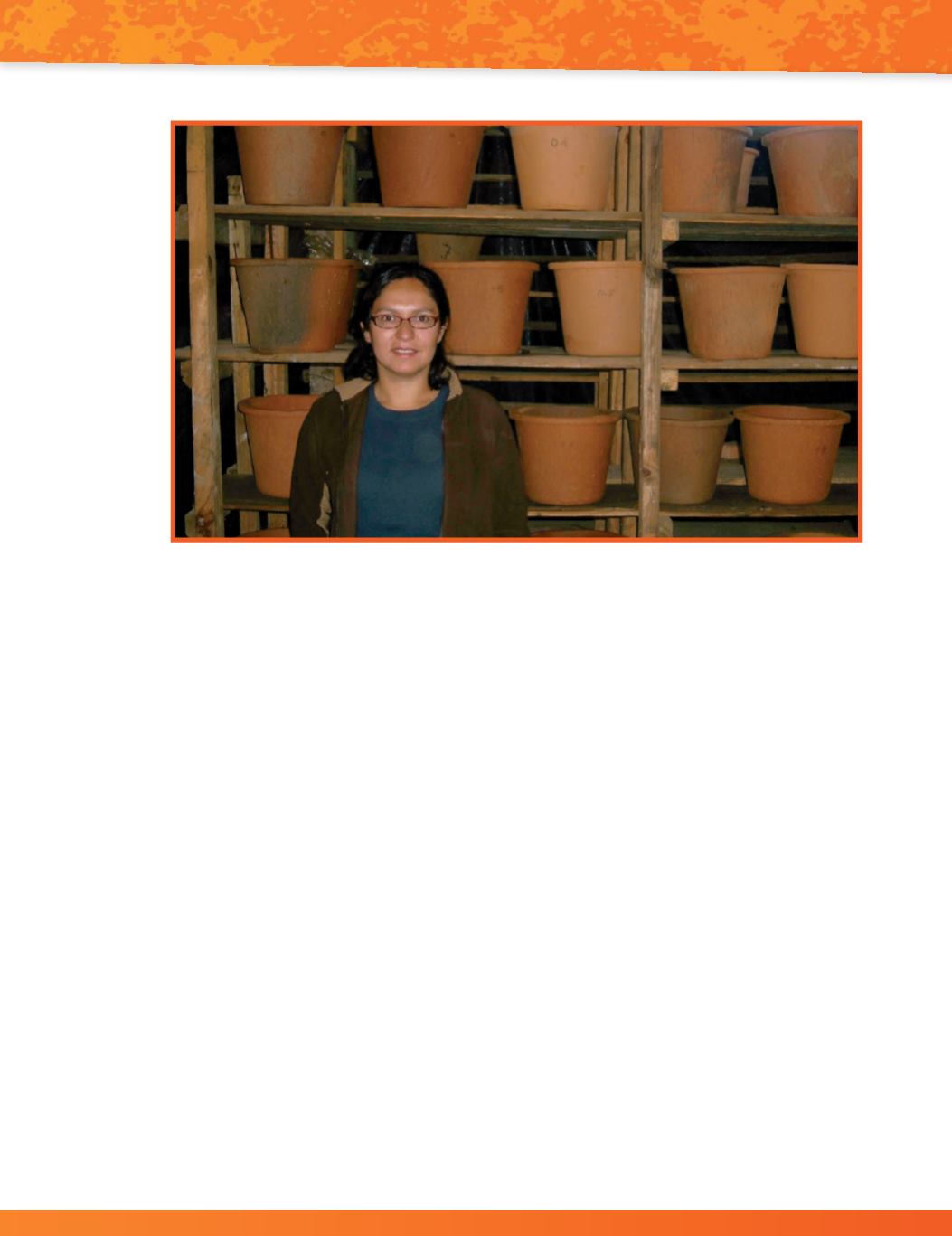

Ceramic Water Filters
Vinka Oyanedel-Craver is an environmental engineer at the
University of Rhode Island. She is working to help people in developing
countries create safe drinking water right in their own homes. For
several years, she has tested and improved water filters that look like
flowerpots without a hole on the bottom. One ceramic pot can slowly
filter up to 7 liters (L) of dirty water at a time to remove sediment and
dangerous bacteria.
When you pour water into the pots, it slowly filters through the
porous walls of the pot. This filtering is similar to what water would
do if you poured it onto a sponge. The pots are made from clay and
very fine sawdust. When the pots fired in a kiln, the sawdust burns.
This leaves microscopic holes in the pot. If you looked at the clay with
a very powerful microscope, you would see these holes. The tiny holes
allow pure water to pass through, and trap the things that you don’t
want in your drinking water.
These pots are ceramic water filters engineered
to remove bad bacteria.
79









